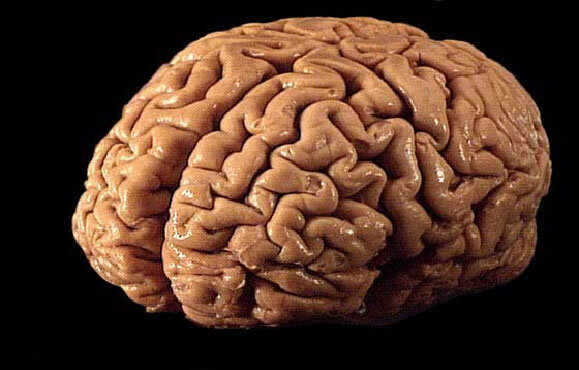Brain Size And Alzheimer's - What's The Connection?
by Catherine Pearson for Huffington Post:Measuring the thickness of certain spots in the brain may help researchers determine which symptom-free adults are at greater risk of early-onset Alzheimer's disease. The need for improved early detection is pressing: Alzheimer's affects more than 5 million Americans and is the sixth leading cause of death among adults in the U.S.In a new study published Wednesday in the journal Neurology, researchers used brain scans to assess the thickness of nine regions in the cerebral cortex -- the so-called "gray matter" of the brain where most information processing occurs. Earlier research has suggested that those nine spots shrink in patients with Alzheimer's disease.The authors of the new study used the scans to break the 160 seemingly "normal" participants, whose average age was 76, into three groups: those with enough brain shrinkage to be considered high risk, those whose measurements put them at average risk, and those whose risk was low. They were monitored for three years, taking frequent memory and problem-solving tests.During that time, more than 20 percent of the high-risk participants experienced cognitive decline, while only 7 percent of the average-risk individuals did. None of the low-risk participants showed any evidence of cognitive decline."In our research over the years, we've learned that people can come in, get carefully evaluated [for Alzheimer's] and are found to be normal," said Dr. Brad Dickerson of Massachusetts General Hospital in Boston and a member of the American Academy of Neurology (which publishesNeurology)."But the process percolates along -- it takes years to develop before a person has symptoms," he continued. "This study is proof of concept that the measurements we're making are quite sensitive, and probably quite useful."The study also found that approximately 60 percent of the adults who had the most shrinkage also had high levels of amyloid proteins in their spinal fluid, which is another marker of the disease. Amyloid proteins, which are normally harmless, accumulate in the brain of those with Alzheimer's.Dickerson explained that the biomarkers established in the study are not yet meant to be used in clinical settings, as more research is required to properly gauge their utility and accuracy. At present, the findings may be most useful to researchers embarking on clinical trials of amyloid-clearing drugs, he said, which would require them to identify pre-symptomatic individuals who may, in fact, be at high risk for Alzheimer's."We hope, in the next decade, to have something more meaningful that we can offer people with elevated risk," Dickerson added.Dr. Bill Thies, chief medical and scientific officer at the Alzheimer's Association, said the study -- which relied on data from the Alzheimer's Disease Neuroimaging Initiative, a research project supported, in part, by that association -- presents a possible standard measure that might be useful to help detect the disease in people who don't appear to show any signs of cognitive decline."What we know is that if you start down the road of pathological changes that lead to Alzheimer's disease, you are losing brain cells," Thies said. "Is it a good thing to have a big brain and thick cortex? The answer to that is probably 'yes.' Is it bad to have a thin cortex and a smaller brain? The answer is probably 'yes.'"However, he cautioned that the study is small and the findings are preliminary."The context for all of this is simply that we're in the early stages of an epidemic [of Alzheimer's]," Thies said, "and we don't have the tools we need to identify the disease."Source: http://t.co/QgA1AxXL

